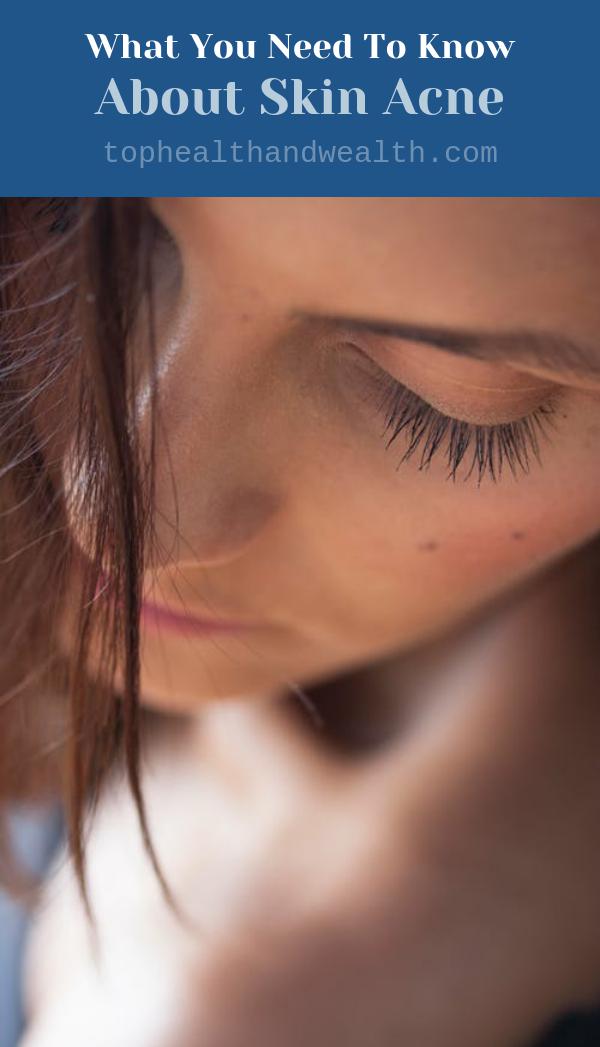What is Acne?
Acne is a chronic disorder of the hair follicles and sebaceous glands. Some of the characteristics of acne include blackheads, pimples, cysts, infected abscesses, and rarely scarring. Acne usually occurs during adolescence in both men and women. To be more specific, acne starts during puberty and tends to get worse for people with oily skin. Acne badly affects teenage boys. Only mild to moderate forms of acne occur in middle-aged women. Acne can be seen most commonly on the face. The other places where it can occur include the neck, chest, back, shoulders, scalp, and upper arms and legs. Most forms of acne are the result of heredity and hormonal problems and has nothing to do with a harmful diet or poor hygiene.

Types of acne
Acne starts in a similar way for all but can take different forms and can react in a unique way according to the body conditions of the individual. A basic lesion called the comedo is the beginning of acne. The comedo is an enlarged hair follicle plugged with oil and bacteria residing under the surface of your skin, that waits for the right conditions to grow into an inflamed lesion. Whenever the skin produces more oil, the bacteria grow within the swollen follicle. The surrounding skin becomes increasingly inflamed as your white blood cells fight against the intruders. Two main types of acne include non-inflammatory acne and inflammatory acne.
Non-inflammatory acne
If the plugged follicle stays below the surface of the skin, the lesion is called a closed comedo. This usually appears on the skin as small, whitish bumps. This condition is otherwise called a whitehead.
If the plug enlarges and pushes through the surface of the skin, the lesion is called an open comedo. The dark appearance of the plug is not due to dirt, but due to the buildup of melanin, the pigmentation element of the skin. This condition is otherwise called as blackhead.
Inflammatory acne
This appears on the skin as a small, firm pink bump. The papules are tender in nature and are often considered an intermediary step between non-inflammatory and clearly inflammatory lesions.
These are small round lesions that are inflamed and contain visible pus, which appear red at the base with a yellowish or whitish center. Pustules do not contain a large amount of bacteria. The inflammation is caused by chemical irritation from sebum components such as fatty free acids.
These are large pus-filled lesions that are usually present deep within the skin. The cysts are very painful lesions, as they are inflamed. Cysts form as a result of the contents of a comedo spilling over the surrounding skin and due to the response of the local immune system in producing pus. The cysts often leave deep scars.
Acne conglobata:
This is a rare but serious form of inflammatory acne that develops primarily on the back, buttocks, and chest. In addition, to the presence of pustules and cysts, there may be a severe bacterial infection.

Symptoms
The common symptoms of acne include persistent, recurrent red spots or swellings on the skin known as pimples. The pimples become inflamed and get filled with pus. The pimples usually occur on the face, chest, shoulders, neck, or upper portion of the back. Some of the other symptoms include dark spots with open pores at the center, which are known as blackheads, bulged spots under the skin without openings, which are known as whiteheads, and red swellings or lumps filled with pus, which are known as pustules. The pustules can develop from blackheads or whiteheads. Inflamed fluid-filled lumps under the skin known as cysts are also a symptom of acne. These cysts can become as large as an inch across.
